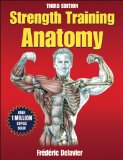Muscles
The human body has 639 muscles which work together with the bones and joints and enable every physical movement.
There are 2 different types of skeletal muscle fibres.
- Fast Twitch Muscle Fibres (FT-Fibres)
- Slow Twitch Muscle Fibres (ST-Fibres)
Everyone has both types of muscle fibres in different proportions.
Muscles are the only organs in the body that can contract. They work in cooperation with the joints and enable the bones to move. However, contraction is about all that the muscle can do. The muscle can only be stretched with the help of the complimentary muscle. The complimentary muscle of e.g. the biceps is the triceps of the upper arm. All our movements are based on this principle of contracting and relaxing.
The brain initiates muscle contraction by sending nerve impulses to the muscle fibres, thereby causing the muscle to contract. The nerve fibres only stimulate as many muscle fibres necessary for carrying out the motion. Each and every muscle fibre is only capable of doing two things (contracting or relaxing). Thus movement of the muscle does not necessarily include the use of all muscle fibres.
During continuous movement, exhausted muscle fibres are replaced by the inactive ones until all muscle fibres have eventually been used. After this the first group of fibres have to show what they are still capable of. This process is more or less repeated according to the level of exertion until the muscles strike.
As muscle fibres share the work, it is important to carry out exercise until the muscles are completely exhausted. It is the last repetitions during exercise, when all the muscle fibres are exhausted, that provide the stimulus that muscles need to grow. Overloading the muscle causes the fibres to swell which in turn causes the muscle to increase its strength further. Therefore the growth of muscles involves swelling and not an increase in the number of muscle fibres. All of the repetitions done before complete exhaustion of the muscle merely serve the purpose of maintaining the substance of the muscle mass.
top  |
Muscles weighs more than fat:
On the basis of this fact some people have come to the conclusion that weight cannot be lost if the muscles are exercised. This is not quite true. You can still look thinner even if the scale still shows the same weight. The volume of 1kg muscle is less than 1kg fat. Despite the same weight you have for e.g. a smaller waistline. Furthermore: more muscles also mean an increased calorie requirement in order to supply the muscles with energy. This increases the basic metabolic rate.
top 

You Are Your Own Gym: The Bible of Bodyweight Exercises, Mark Lauren, Joshua Clark

Men's Health: The Book of Muscle--The World's Most Complete Guide to Building Your Body

Strength Training Anatomy-3rd Edition, Frederic Delavier
top 
|

